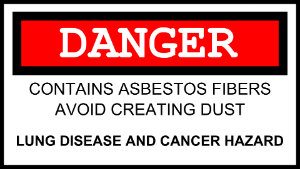Today, most people are aware of the fact that asbestos exposure is dangerous. However, this wasn’t always the case and it wasn’t that long ago that it was called the “magic mineral”.
Learn more about asbestos symptoms in our previous article: https://banvillelaw.com/mesothelioma-asbestos-symptoms-lawsuits/
It as during the Industrial Revolution that the use of asbestos became extremely popular. At first, it was mainly used to insulate homes, boilers, and pipes. Then, a chemist discovered that if it was combined with cement it was flame retardant, soundproofing, and strong - not to mention inexpensive.
From there, other inventors began to add it to fabrics, talcum powder, automotive brakes, floor and ceiling tiles, paints, and toothpaste. Mine owners became rich due to the high demand as did product manufacturers. Which is why when word began to spread that asbestos could potentially be harmful, many ignored the warning.
The first reports indicating that asbestos might cause serious health problems were not widely circulated. In 1899, a medical case was published indicating that a patient had severe lung scarring caused by asbestos exposure. Seven years later in France, doctors indicated that sixteen employees in an asbestos textile plant had occurred due to pulmonary fibrosis and these deaths led to the use of protective respiratory gear and ventilation systems.
In the United States, the first mention of possible danger came from the U.S. Bureau of Labor Statistics in a report released in 1918, which noted that asbestos workers had a high risk of early death. Still, despite mounting evidence, no safety measures were recommended.
In 1930, a German doctor, Dr. Merewether, discovered the medical condition now known as asbestosis. He studied the condition and determined that it took years for workers to develop the disease, that the only way to protect workers was through the use of ventilation and respiratory protection, and that all workers should be informed of the risks of exposure. This report lead to safety regulations in Europe, but the U.S. did not create any.
In 1933, eleven sick employees filed lawsuits against an asbestos factory, alleging that exposure to the mineral lead to their pulmonary diseases. The factory and ill workers settled in each case. Over the next four decades, research only continued to show that asbestos exposure caused numerous health issues including cancer. Finally, in 1970, the Clean Air Act was approved by Congress and forced employers to regulate asbestos exposure and the very next year, a federal court awarded a plaintiff suffering from asbestosis compensation.
Although the danger of exposure is well documented, asbestos is still used in some products today and older buildings can contain it in the walls, ceilings, and floors. This has caused thousands of workers to become ill and to seek compensation for their losses.
In one case, a man who began working for a welding plant and had been since the 1960’s, discovered when he was in his 70’s that he had developed mesothelioma, a cancer now known to be caused by asbestos exposure. It was determined that during the course of his work, he had routinely been exposed to asbestos dust and insulation.
He and his wife sued his employer, alleging that his employer had failed to warn him of the danger he was in when he worked around asbestos, that they failed to offer him any protection, and that they did nothing to lessen the amount of exposure he experienced. Sadly, he passed away from mesothelioma before the case ever went to trial. His wife continued with the suit on his behalf.
After hearing all arguments, the jury awarded his wife a total of $1.7 million, including $1 million for her loss of consortium, $500,000 for wrongful death, and $200,000 for a survival claim.
In cases where a family member has died due to the negligence of another, loss of consortium can be claimed. The damages awarded as a result of this claim compensate the plaintiff for the loss of love, affection, companionship, and comfort that the deceased would have provided them.
Despite all of the known dangers of using asbestos, it is still commonly found in:

Sadly, many workers are surrounded by this mineral and don't even know it.
If you suspect that your employer may be placing you in harm’s way, there are several steps you should take to protect yourself:
For more related material, see our next story: https://banvillelaw.com/60-million-by-manhattan-jury/